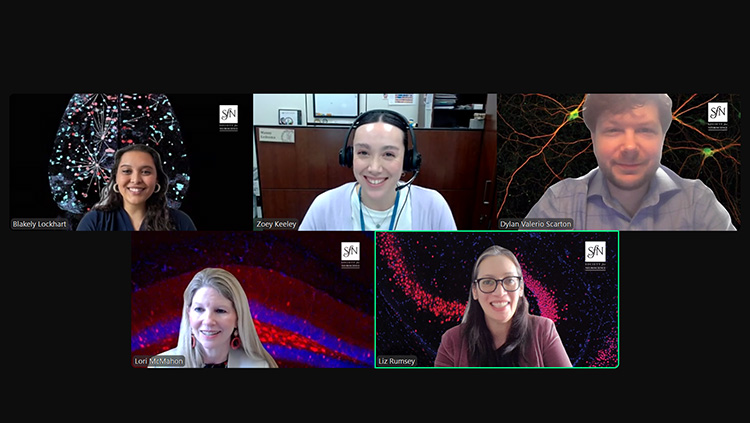
Animal research, even when scrupulously regulated and performed with the upmost care and kindness, remains an ongoing ethical conundrum for many, including myself. I am a lover of animals, big and small.
However, I would not be alive today without the fruits of animal model research. I was diagnosed with epilepsy when I was a young child and have lived with this disorder my entire life. I rely on basic research, specifically animal model research, for new anti-seizure drugs and other novel treatments. The fruits of animal research continue to improve my life and the lives of other epilepsy patients daily.
I have the unique combination of experience with epilepsy at a personal level and the science of epilepsy at an intellectual level. As a neuroscience researcher, I have seen first-hand that animal models are essential and irreplaceable in basic science. Without these animals, understanding of diseases would not be possible.
In basic science, animals are used to:
- Improve understanding of biological processes (which are often very subtle and complex).
- Act as models to study human disease.
- Develop and test potential forms of innovative treatments (e.g., the novel vaccine for COVID-19).
In January, I was selected as a top advocate for the Society for Neuroscience (SfN) year-long NeuroAdvocate Challenge. Throughout the year, I participated in several advocacy challenges. As part of this program, I was invited to speak to members of Congress about the importance of neuroscience funding at SfN's 2021 Virtual Capitol Hill Day.
This year, SfN had many Hill Day "asks,” but the closest to my heart was support for ethical and well-regulated animal research.
When I advocated for animal research on the virtual Hill this year, I received interesting questions from congressional staffers about why animal research is essential. Some staffers were not at all familiar with the topic and asked questions like “What is animal research?” and “How do you use animals in research?” Other staffers who seemed familiar with animal research asked questions like “Why do you have to use animals? Can you use something else?” and were concerned that animal research is immoral and unjust. To me, these perceived barriers and opinions are a result of poor scientific communication.
One of the most challenging problems with advocating on behalf of animal models is that the subject is clouded and controversial. Animal rights groups have conducted well-funded media campaigns that often deliver a biased and negative message about the role and value of animal studies. Animal researchers do not openly discuss the specifics of their work with the public and can appear to be secretive. Even when information is available, most politicians and most of the general public are not trained to understand the complex scientific jargon and policies in basic science.
The mission for those of us who engage in scientific outreach and advocacy is to convey the necessity of animal research, how research animals in our care are treated compassionately, respectfully, and humanely, and how our research contributes to improvements in human and animal health. As scientists, we are familiar with crafting and delivering research findings to our colleagues, but communicating in a policy environment requires a different, softer approach.
As a human and as a scientist, I have a moral obligation to hold the lives of all sentient beings in the highest regard. I am committed to advancing research while honoring all humans and animals participating in research by ensuring that all research subjects are treated humanely, with the upmost compassion, optimal care, and minimal pain and stress.
When I first began my advocacy journey, I had to learn to talk about my project in a way that helped any audience understand why the animal models are necessary. My research uses mice to study the development of temporal lobe epilepsy. My dissertation is challenging to explain to the general public because my research involves a protocol to induce seizures in mice so that they will develop epilepsy later in the experiment.
To the general public, this experiment can seem inhumane. In describing why animal research is necessary and what progress would be lost without animal models, the crucial role of animal research in developing cures for diseases becomes clear. I learned how to explain what would be lost if I could not perform my epilepsy experiments in mice. I explain how turning away from animal research would result in immediate consequences to the progression of treatments for neurological diseases.
As an Early Career Policy Ambassador, the Society for Neuroscience provided me with excellent advice on how to properly communicate the importance of animal research. I’m going to share that advice with you:
- Compose a clear and concise description of your animal research.
- Avoid scientific jargon.
- Understand the important of the Institutional Animal Care and Use Committee (IACUC)
- Understand why you use your animal model, how your research is translatable, and how the outcome of your investigation will benefit humanity.
- Understand your audience and their concerns about animal research. It is critical to understand both sides of an argument (but you already know that as a scientist!).
- Keep your message brief.
As a scientist and a person living with epilepsy, I truly appreciate the importance of research, innovative treatments, and how they impact the progress of diseases. I love sharing my story with politicians and the public to support biomedical research so they can see a direct impact of their support for research from a patient perspective.
For more information on how to get involved with SfN’s advocacy efforts, please visit the SfN Advocacy Action Center.








